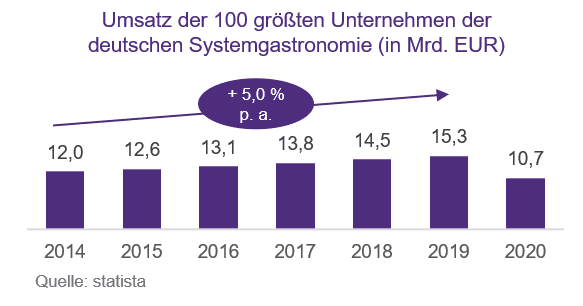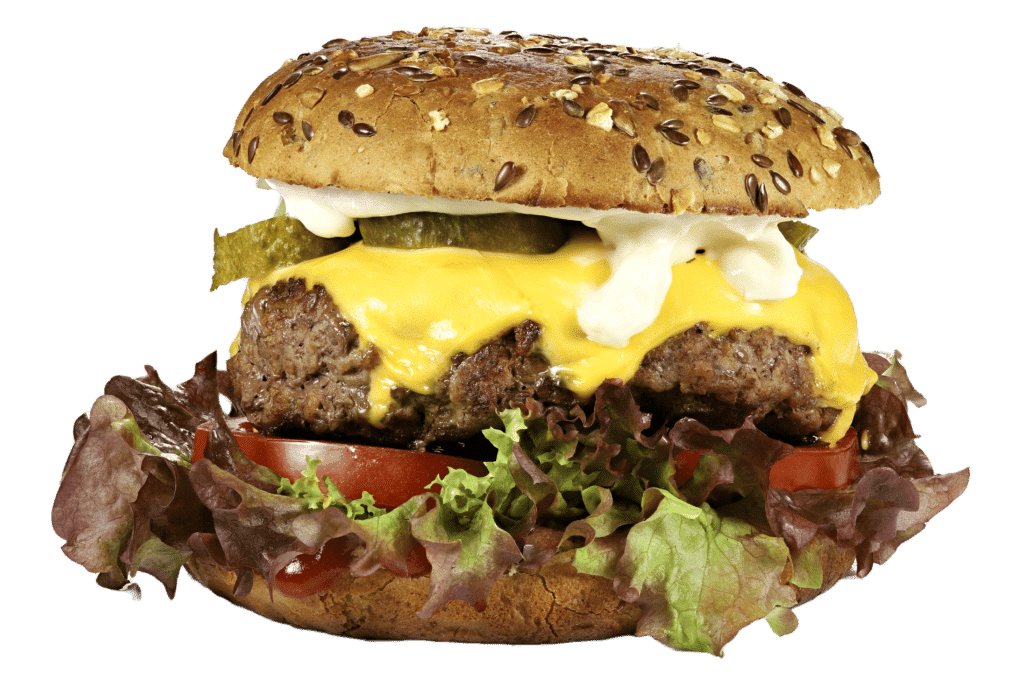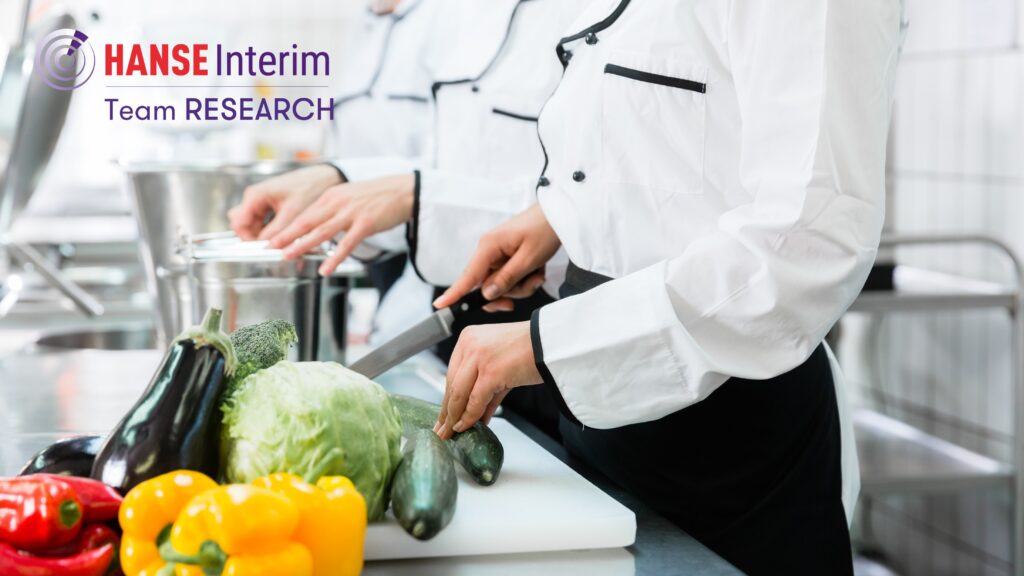HANSE Interim | Team RESEARCH: Analysis of the market development in the course of a project
In 2019, the German system catering industry’s hunger for growth was still unchecked. The turnover of the 100 largest companies in the industry increased by approximately 5% per year since 2014. In total, the system gastronomy market in Germany was about 25 billion euros in size according to the BdS (Federal Association for System Gastronomy), which corresponded to about 30% of the total gastronomy in Germany.
Urbanization and current trends
The main growth drivers were, on the one hand, increasing urbanization and steadily rising net household incomes, but on the other hand also new market players who picked up on the trend toward healthy eating and can successfully serve it with corresponding products.
This in turn prompted leading fast-food chains to offer vegetarian and vegan burgers, for example, as well as other meat-free dishes, in addition to salads, in order to respond more strongly to current trends.
The Corona crisis turned the market dynamics of the German restaurant landscape upside down.
Due to effects of the pandemic – especially the interim closures – system gastronomy lost over 24% of all visits in 2020.
Meanwhile, sales of the top 100 fell by around 30%.

What measures has the industry taken in response to the changed environment?
Which trends will be able to leave a lasting mark on system gastronomy in the future?
The HANSE research department analyzed the current developments of the market in the course of a project in the HANSE Group and determined:
During the pandemic, consumption occasions in particular changed. Breakfast on the way to work, lunch in the canteen, a snack in the café in the afternoon or dinner with friends are perceived significantly less in the current situation.
At the moment, people are consuming more at home. Accordingly, restaurant operators who make contactless ordering and payment of meals much easier via their own apps, delivery services or drive-ins have an advantage. Thus, according to BdS, in 2020 there was an increase of 19% for deliveries, 23% for pick-up and 30% at the drive-in counter.
System catering has shown its strength in this respect during the crisis; fast food restaurants were able to implement appropriate measures and the hygiene concepts required by law in a timely manner and thus achieve an increase in sales of around 5.6% in 2021 (source IBISWorld).

During the announced relaxation of the Corona Protection Ordinance, significantly stronger growth of 12.1% should be possible this year.
System catering has shown its strength in this respect during the crisis; fast food restaurants in particular were able to implement appropriate measures and the hygiene concepts required by law in a timely manner and thus achieve an increase in sales of around 5.6% in 2021 (source IBISWorld).
In the course of the planned relaxation of the Corona Protection Ordinance, a significantly stronger increase of 12.1% should be possible in 2022.
But which success factors will be able to play a special role in the future?
The BdS has identified the following topics:
- Delivery and collection in conjunction with a secure hygiene concept remains without alternative. Ordering via the online store or app also offers the opportunity to increase the average receipt through recommendations.
- The Corona pandemic has already served as a catalyst for digitization in system catering, and digital options for the guest will also become increasingly important in the future. This includes ordering for pickup or delivery, as well as menu cards, table reservations and a strong social media presence.
- Establishing an emotional connection with the customer creates loyalty and trust, so that consumers will want to visit “their” regular restaurant again even after the infection situation has calmed down. Targeted advertising activities or promotions to strengthen local networks at the restaurant’s location should be used and expanded.
- Consumers often crave comfort food, especially in tough times, food that makes them happy but doesn’t necessarily have to be healthy. In addition to the specialty of their regular restaurant, this can also represent something new or out of the ordinary.
- Alternatives to classic fast food such as fast casual dining are gaining in importance. Here, dishes are often prepared fresh in front of the customers and particularly high-quality ingredients, often organic products, are used. This combines the advantages of fast-food restaurants with the social trend toward sustainability and healthy eating.
What developments do you see in this market in the future?
With best regards
Your HANSE Interim Management
Andreas Lau and Christian Heuermann


